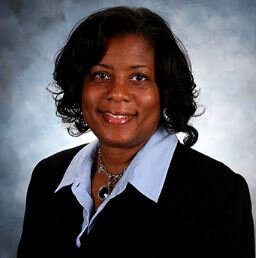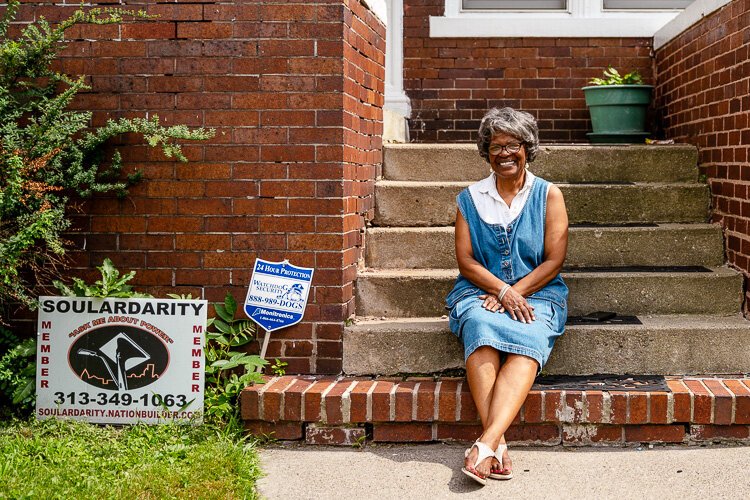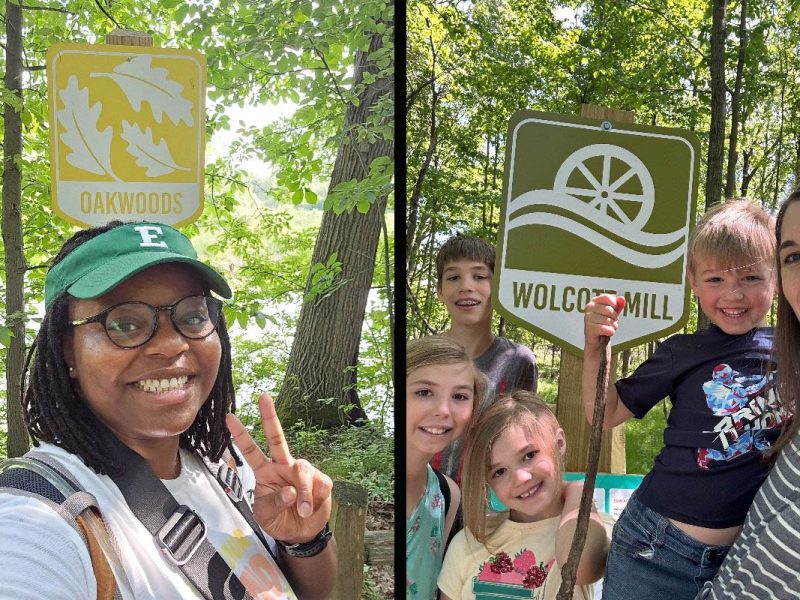Amid calls to defund police, Detroit leaders weigh in on solutions and alternatives
“People are deeply fed up with both police violence and structural violence in this city and across the country. They are deeply frustrated by the ways that racism defined people’s opportunities; others in housing, education, or even by your ability to be able to live out your life and not be killed by the police or interpersonal violence."

When Lisa Carter heard about the death of George Floyd in Minnesota, her mind immediately went to her two sons. As chair of the Detroit Board of Police Commissioners (BOPC), Carter says her 25-year work background with the Wayne County Sheriff’s Office as well as her personal life as a wife and mother to African American men fuel her to seek change in the local police department and community.
“When George Floyd called out for his mother, I kind of lost it. Because I could feel the pain that one would experience if that was their own child,” Carter says, also mentioning the death of Rayshard Brooks, who was shot and killed by police last month in Atlanta. “As a mother, as a sister, as a daughter, they’ve affected me and I think that change is necessary, and life has to be valued. They have to be valued more than they’d been valued in the past.”
In the wake of Floyd’s death, protests have mobilized in several states, and locally in Detroit, where protesters have marched regularly since late May. While most protests have mostly been peaceful, there have been instances of violence, including during the early days of the protests when demonstrators were met with tear gas, shields, and handcuffs, with scores arrested after being out past curfew and reports of some protesters hurling objects at police; a police car driving through a crowd of protesters; and the fatal shooting of Hakim Littleton by police near Six Mile and San Juan. Police footage shows Littleton being shot after firing at officers who were arresting a man on a separate matter, sparking a protest that resulted in eight arrests.
Detroit Will Breathe and other community leaders gathered Friday, July 10 in the neighborhood seeking answers.
“When the movement calls for defunding the police, it means that the conditions that led to Littleton’s death should never have been possible,” according to a statement on Detroit Will Breathe’s Facebook page. “We see time and time again the interactions between police and Black and Brown people ending in violence and death. The brutal force protestors were met with by DPD instead of care and explanation is a clear example of the treatment dispensed in our communities every single day by police. Their response to us is in fact what made us come to the streets in the first place.”
To ensure the Detroit Police Department (DPD) is responding to the needs of the community, the BOPC revisited the department’s Use of Force Policy. On June 11, the BOPC conducted its weekly meeting to discuss 16 revisions to the Use of Force Policy, such as require de-escalation tactics, ban neck holds, prohibit retaliatory and punitive uses of force, and duty to intervene, intercede, and report.
The recommendations were sent to the DPD after the June 11 meeting. The public and the police department have 30 days to review and comment on the policy changes. After it’s reviewed by the DPD, it goes back to the board for final approval. The next BOPC meeting is Thursday, July 16 via Zoom.
“We just had a review of our use of force policy the month before Mr. Floyd passed away. And of course, his death prompted us to review our policy. And there were some policy recommendations that can’t wait. The things we can do right now to effect change in the police department in our policy is to ban chokeholds and strangleholds,” she says. “We absolutely looked at what transpired with George Floyd.”

The recent deaths of Floyd, Brooks, and other Black men and women at the hands of police have sparked outrage around the country in response to systemic racism, including calls to defund the police. Here in Detroit, grassroots organizers have taken to the streets every day with a list of demands, which not only include defunding and demilitarizing the police but also addressing social inequities such as water shutoffs and evictions. But what do real-world alternatives to the modern police system look like? Model D spoke to several community organizations and police officials about strategies in keeping communities safe.
‘They want change’
For the Wayne State University Police Department, which report more incidents off-campus than on-campus, everyone must be on board with safety changes in the department, says Police Chief Anthony Holt.
The university reported in May that the department was establishing a headquarters for a national de-escalation training center. According to the university, a nonprofit corporation status was filed with the state of Michigan. The training, Holt says, involves understanding someone’s mental health and deciding how to address that person. De-escalation, Holt says, is useful when conducting a traffic stop. While the person is not comfortable with a police officer stopping them, and may express their discomfort, Holt says one of the best practices is for the officer to calmly explain the stop.
Holt says the plan for the center has been in motion for the last few years. However, with the COVID-19 pandemic, the department halted face-to-face training. Holt says a few of the officers began training shortly before Gov. Gretchen Whitmer’s shelter-in-place order. Virtual training began the week of June 20 with plans of face-to-face training by the end of 2020.
Holt says de-escalation training is not a “one size fits all” tactic, as each person police come in contact with is different. But the goal of the training center, he says, is to further prepare officers on how to handle situations individually without immediate excessive use of force.
In wake of recent police-involved incidents, Holt says the department receives numerous calls from residents explaining police encounters as far as 10 years ago. Holt doesn’t dismiss the complaints, and instead says he uses those complaints to remind officers how to handle future calls in the city.
“I think you have to understand why people are protesting,” he says. “They want change. They want to be part of the change. So when you say you have to show [change], thus is the perfect example when to show it.”
A lifelong Detroit resident, Holt recalled being one of few Black police officers with WSUPD when he joined in 1977, and still remembers standing on the corner of Dexter and Clairmount avenues when the 1967 riot began. He became chief of police in 2008 of a staff from diverse backgrounds.
“Diversity is crucial to me in this police department. Everybody, whether it’s Black, white, Asian, or whatever, they want to see officers who can relate to them, who look like them, who feel the same issues as that they have,” he says.
Proactive, not reactive
Outside of law enforcement, community-based organizations, such as the Detroit Safety Team (DST), continue to advocate for self-awareness and public safety. The organization, which grew from Allied Media Conference Detroit, works to “redefine safety” and help the community learn how to navigate through conflict resolution practices. John Sloan II, who joined DST four years ago, says the organization has active de-escalation training and has developed a citywide safety team. Sloan says the techniques they discuss are proactive as opposed to reactive.
“We’re focused on building things up and creating systems and alternatives with the acknowledgment

that what we have right now is not good enough for everyone, that what we have right now serves the people who built it,” he says.
“We need to start by saying what is it that you need to live your life in a way that means that you are safe and you can take care of your families and you don’t have to worry about these external forces that are designed to pull you down,” he later adds.
Sloan reiterates that while safety tactics are a major topic and concern today, he urged for more to be done other than police de-escalation training.
“You can’t have conversations about safety without also having conversations about economic justice, about water justice, food justice, and equal access and equitable access to educational resources for our youth. And all these things play into what safety actually looks like and feels like to someone,” Sloan says. “If someone says, ‘Well, we just give police some de-escalation training. That will fix everything.’ No, it won’t.
“Because the system of policing in and of itself is what is at fault. And that system needs to be completely upended and reformed.”
In 2019, seven organizations, including the Detroit Justice Center, asked for the Michigan Department of Health and Human Services (MDHHS) to end water shutoffs in Detroit because of public health concerns. A MDHHS Declaratory Ruling Form discusses shutoffs dating back to 2014 with 33,000 residents at the time, with 23,000 and 27,000 in 2015 and 16 respectively; 17,600 in 2017, then 11,000 in 2018.
“I would really hope that those reforms are just a first step,” Sloan continues. “And the only way that we can make sure that [the reforms are] just the first step is if we continually remember that we are in control of our own safety and apply the pressure where is necessary.”
For Phillis Judkins, community policing is a step to making change.
Her North End Neighborhood Patrol organization consists of 35 patrollers, cleaning alleyways to reduce any drug activity and cut grass for seniors. Since starting the organization 10 years ago, Judkins has noticed that the neighborhood has been fairly quiet. In the wake of the pandemic, Judkins says neighbors remain in their homes majority of the time. The pandemic has also affected having frequent patrollers. As an alternative, Judkins says at least neighbors in the community, whom she calls her 10-minute men, patrol through from their windows and stay in contact with her for updates.
“I think [community policing] is very important because the police can’t get to the areas. The neighbors let us know about what’s happening,” she says. “One man, he was on the street dying and we saw him before the police and we were able to help him and wait for the police to come. So we need neighborhood patrols to be out here helping.
“Plus the neighbors know us. They look for us.”

Investing in communities
In addition to community policing, activists look to the younger generation for suggestions on alternatives to police. Amanda Alexander, founding executive director of the Detroit Justice Center (DJC), says young Detroiters are interested in other alternatives such affordable and accessible housing options, improvements of classrooms and a spa-like place for people with mental health issues. The DJC, which is a nonprofit law firm, works with the Detroit communities to address its justice system. The organization held a seminar in 2018 and asked youth what they would do if they had $533 billion that Wayne County announced it planned to use to build a new jail.
According to DJC, 400 people jailed in Wayne County on any given day have been diagnosed with a mental illness. Sixty-two percent of people in jail in Wayne County are held pretrial, sometimes because they can’t afford to pay for bond. In addition, 70% of people in Wayne County jails are Black compared to the nearly 40% general population in the county. The DJC suggested in lieu of building a new jail, the current facility should be renovated.
“People are deeply fed up with both police violence and structural violence in this city and across the country. They are deeply frustrated by the ways that racism defined people’s opportunities; others in housing, education, or even by your ability to be able to live out your life and not be killed by the police or interpersonal violence,” Alexander says.
These types of solutions are known as restorative justice, and advocates say that instead of spending money on police, these alternatives to courts and jails are believed to be effective models. In fiscal year 2020, the City of Detroit spent more than $300 million on DPD from the city’s General Fund.
The Detroit Justice Center recommended that the $300 million spent on police could be used to: build 18 restorative justice centers ($17 million each), provide $100,000 child care tax income credit to thousands of families, create mental health and rehabilitation facilities for 244 patients, create 10,160 living-wage jobs, house every homeless person in $90,000 homes and give a $5,000 tax credit to 23,000 households facing tax foreclosure, and renovate and modernize all Detroit Public Schools Community District schools within two years ($500 million total).
“I think that what’s key about this moment is that people are looking at budgets and looking at how much resources are actually putting into policing and how much we are putting into all the other things that we know make communities safe and help them thrive,” she says.
And when it comes to the relationship between the community and police, Holt says he understands that the public’s strong feelings toward law enforcement. Holt recalls driving through Detroit when someone flashed their middle finger at him.
“I, as the chief of Wayne State (University), understand the frustration nationally and locally that people have about police, the cultural work in law enforcement and they are demanding a change,” Holt says. “They want more community oversight. They want more community involvement and they want a different approach.
“I always thought what we were doing was the right way. But now, I’m going to take a deeper look and whatever changes we can make for a positive, that’s what we’re going to do.”






